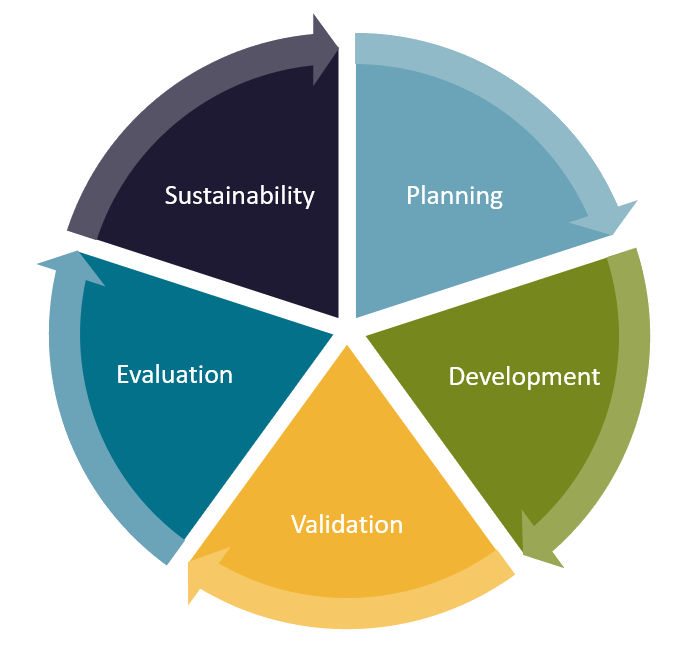16 Where to start
Whether you are planning the development of a brand new competency framework or looking to use the toolkit to update or revise an existing one, there is a recommended process and considerations to ensure that you get the most out of your effort. We will look at these a little further from two points of view in the next chapters:
Whether you are creating or revising a competency framework, the process is much the same. However, for each stage there will be more or less emphasis on certain activities depending on your context.
Below is an outline for the overall process of developing a competency framework.

Process Steps and Considerations:
(Click on each process step heading to show/hide the details for that step)
Planning
Templates for this stage: Competency Framework Development Canvas
Included in this stage:
- Discovery – use case, scope, format, etc
- Background research
Important considerations at this stage:
- Determine the purpose from the onset – what problem(s) are you trying to solve by using the toolkit?
- What is the purpose or use of the competency framework?
- Who is the end user? What is their understanding of competencies?
- Do you need a simple framework, or can it be something more complex?
- Does anyone else have a framework/competencies that you could use?
- Has anyone else developed one you really like?
- It is often easier to repurpose and adapt something rather than create from scratch.
Development
Templates for this stage: Competency Authoring Template and Competency Framework Development Workbook
Included in this stage:
- Task analysis
- Consultation with subject matter experts
- Determining structure and groupings within the framework
- Validation with stakeholders
Important considerations at this stage:
- Who do you need to talk to if there are no competencies developed for the role or context? Which experts do you need to call on?
- Ensure input from a broad group for validation, including those who participated initial development.
- Manage scope changes – some may be necessary but keep the objectives in view
- Goldilocks approach in defining competency and activity groupings (not too big, not too small)
- Input and validation need to capture a wide range of perspectives, and be checked for unconscious bias.
- Who is the framework for?
- How will they use it?
- Did we invite them to participate in developing it? If not, how do we ensure their input during validation?
Implementation
Included in this stage:
- Final editing
- Preparing for distribution (print, digital layouts)
- Publish framework
- Socializing/promoting to intended audiences
Important considerations at this stage:
- Which formats are your publishing your framework on?
- Flexibility and adaptability – these have to be “living documents”
- Does the framework need to allow for additions later on?
Evaluation
Included in this stage:
- Review and planned revision cycles
- Feedback on usability and any errors or omissions
- Monitoring for changes that may impact the competency framework (changes in technology, occupational scope, etc)
Important considerations at this stage:
- How rapid is the pace of change related to the framework?
- How easy is it to make edits and update the framework?
Sustainability
Included in this stage:
- Ongoing maintenance
- Funding model
Important considerations at this stage:
- Who owns it?
- Where does it live?
- How will it be maintained?

